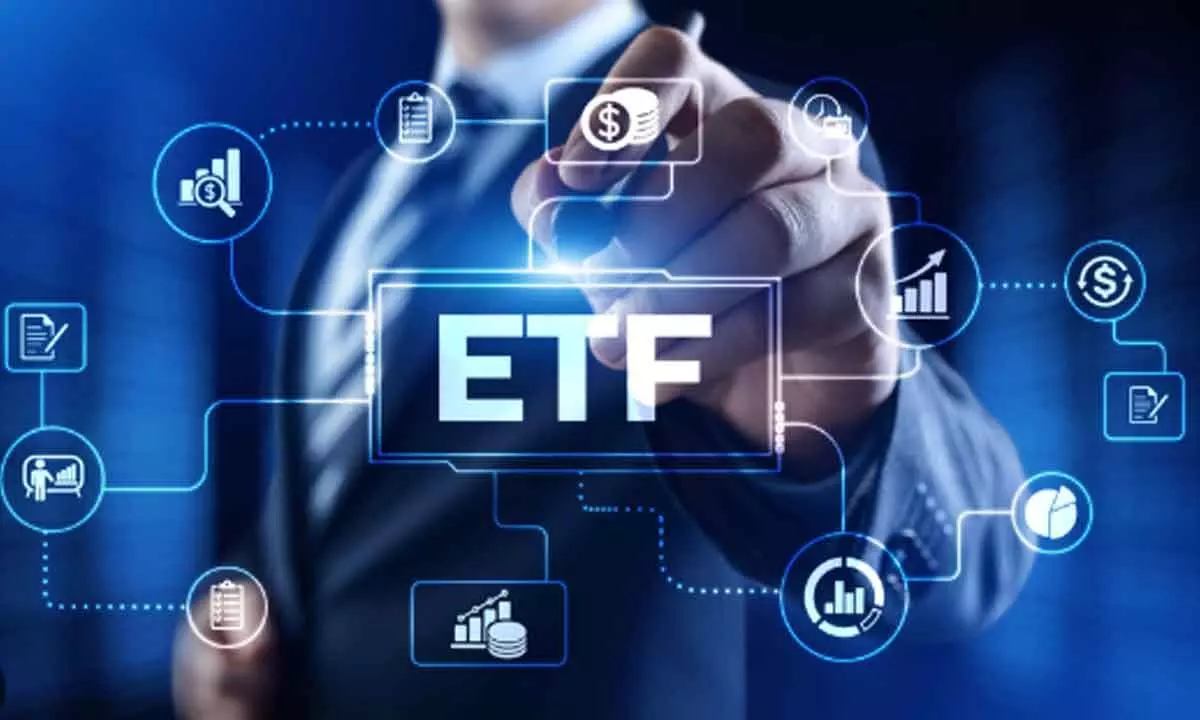Which is the best bet for investment? MF or ETF?
ETFs have a better advantage with relatively lower expense ratio than index MF
image for illustrative purpose

Exchange Traded Funds (ETFs) are investment funds that are traded on exchanges similar as stocks. They hold diverse stocks within a single investment vehicle, though quantitative criteria like top 50, momentum, value, quality, etc. could also be used to distinguish
Over the week one of my investors has forwarded a Youtube video mentioning about quadrupling return through an iteration to the SIP (Systematic Investment Plan) in MF (Mutual Fund). It began promising and then went on a tangential fantasy with so many assumptions bordering some false claims. Not going into the wrongs of the video, I would like to highlight and clarify the distinction on MF and ETF (Exchange Traded Fund). MFs and ETFs are avenues to invest in a portfolio of multiple securities ranging from equity, debt, commodities, etc.
The case in point is equity and so going forward would refer to equity oriented investments. There are two broad classifications within MF: Active and Passive funds. Passive funds are those which track a benchmark or an index. They invest in a basket of securities which mirror the benchmark or an index they’re tracking. In an active fund, however, the selection of securities and their proportion of allocation would be at the discretion of the fund manager. Though these funds follow a benchmark, they needn’t replicate it and the fund manager plays within the broad governance laws prescribed by the regulator.
Exchange Traded Funds (ETFs) are investment funds that are traded on exchanges similar as stocks. They hold diverse stocks within a single investment vehicle, though quantitative criteria like top 50, momentum, value, quality, etc. could also be used to distinguish. Thus, they follow the principle of passive investing as there’s no involvement of any fund manager to decide on the investment decisions in an ETF. So, considering the similarities, ETFs have a closer relation to the passive MFs i.e., index funds. Both don’t have to rely on the discretion of the fund manager and mimic an index or a benchmark that they track.
In a MF, the investment would be pooled into an account which means the capital across the investors are put together and invested per the mandate. This is true even in a passive or index fund. Hence, the allocation of units is based on the Net Asset Value (NAV), a value that’s the net of all costs to assets among all the investors. This is declared at the end of the day or at the close of the market. Though the fund does make changes i.e., transactions of buy or sell, the gain or loss is tallied at the end of the day and accordingly the NAV is arrived at.
In an ETF, the investor directly purchases the desired fund, appropriating the cost. So, there is a possibility of an investor to time the market i.e., to buy at low of a day (though it might be known only in the hindsight) and sell at high. This could probably make the investor feel that they’d achieved an arbitrage, but it might have negligible impact when the capital involved is small, usually the case with retail investors. Large sums running into few hundreds of crores could find significant advantage of such moves in the market. This calls for an active management which beats the whole idea of passive investing.
So, opting for an active management puts directly in contest with the active funds though the discretion lies with the fund manager and so the costs. One shouldn’t discount the costs of timing and so the costs of research and time spent in doing this, which probably takes it to the same. However, if the comparison is between passive investments i.e., index funds and ETFs then the following parameters to be evaluated.
Expenses: On the face of it, ETFs have a better advantage with relatively lower expense ratio than index MF. It would be imprudent to compare it this way as ETFs have to be executed by the investor (though some brokers and platforms provide for an auto-debit) and so the convenience kicks in. Then of course, the additional costs of brokerage (transaction costs for buy/sell) and STT (Securities Transaction Tax) narrows this gap further to 15bps (basis points) i.e., 15 paise from the earlier average of about 30bps.
Liquidity: This is one of the prime most concern that’s to be considered before evaluating any ETF. There could be newer or sectoral/thematic ETFs lacking liquidity depth thus hindering the transactions (buy/sell) of an investor. ETFs of broader indices mayn’t face such challenges but nevertheless it’s critical to observe this factor. MFs are highly regulated and enough procedures are laid out for providing liquidity especially when redemption pressures are elevated. The recent stress test by the regulator on mid and small caps is one such exercise to assess such scenarios.
Performance: As both target the same benchmark, there’s negligible difference in the performance though ETFs might seem a bit better due to lower costs. But as mentioned earlier this fades when convenience and other factors are added.
So, in conclusion index MF vs ETFs is not about which is better but which is better suited to the investor. For those who prefer and are contended with the benchmark returns could opt for either or both avenues. Investors with a higher risk appetite and looking to generate higher returns than the benchmark could opt for active managed MFs.
(The author is co-founder of “Wealocity”, a wealth management firm and could be reached at [email protected])

